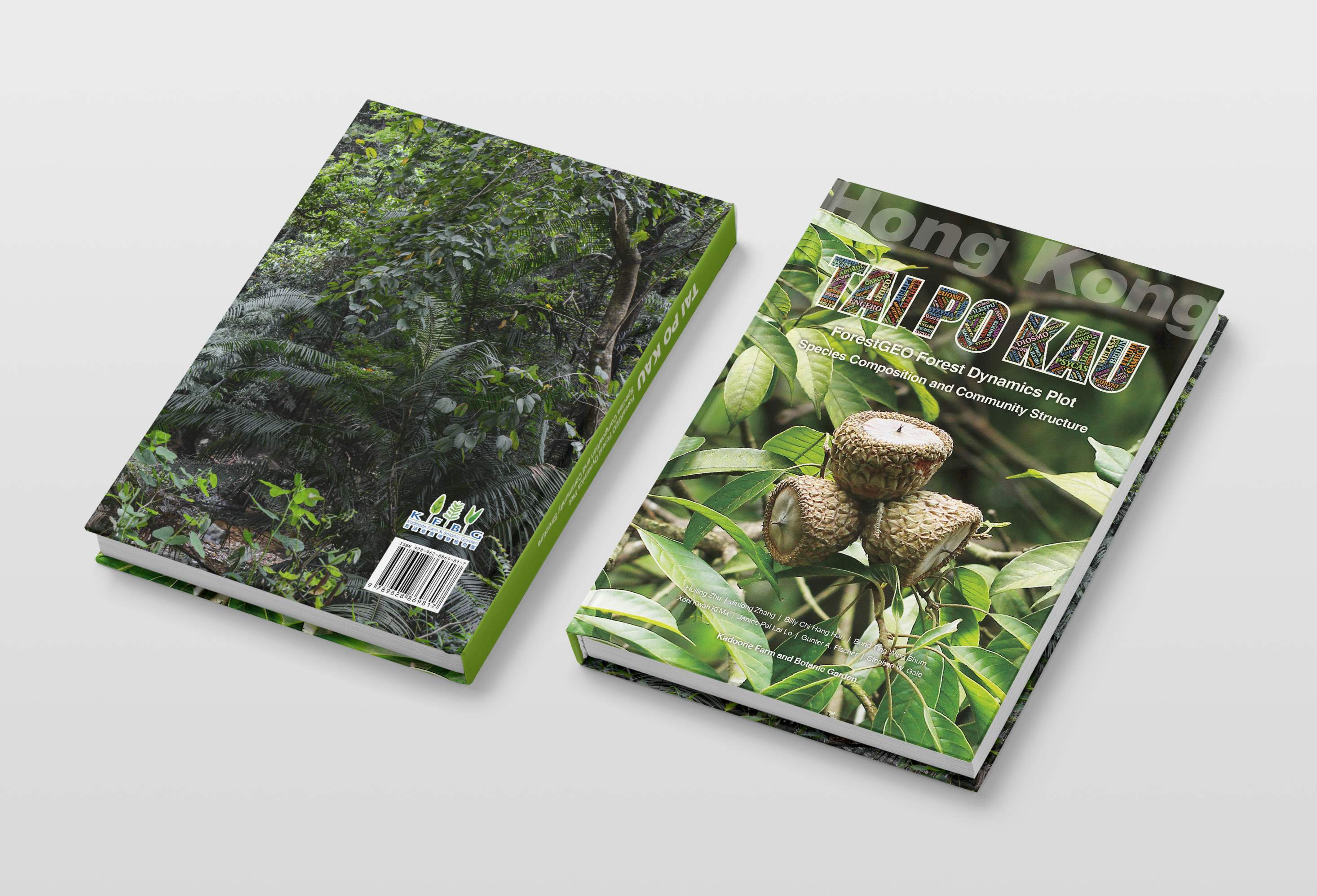Tai Po Kau ForestGEO Forest Dynamics Plot: Species Composition and Community Structure details plant diversity and community ecology

High-resolution images, please download from: https://bit.ly/4bCFLkn
(Hong Kong, April 25, 2024) A new book detailing the plant diversity and community ecology of Hong Kong’s largest nature reserve has just been published by Kadoorie Farm and Botanic Garden (KFBG). Tai Po Kau ForestGEO Forest Dynamics Plot: Species Composition and Community Structure is jointly authored by eight plant ecologists from KFBG and the University of Hong Kong, showcasing the results of thorough field work and data analysis spanning the past decade. This is the first time the make-up of Hong Kong’s secondary forests has been assessed with a high degree of scientific rigour, offering important lessons for the conservation and restoration of the city’s invaluable natural heritage.
.jpg)
.jpg)
Dr Stephan Gale, senior author and Head of the Flora Conservation at KFBG, agrees. “We are delighted that this book has come to fruition after many years of hard work. In the process of compiling it, we systematically sorted dozens of references to ensure the description of each species is as detailed and accurate as possible. In so doing, we have corrected errors in identification and botanical documentation elsewhere, enhanced with first-hand records and observations from the field. In addition, we make use of the most up-to-date names and classification systems to reflect recent research progress. Accordingly, the contents of this book will be invaluable for species conservation, land management and forest restoration.”
About Tai Po Kau Forest Dynamics Plot

Located within Tai Po Kau Nature Reserve, the Tai Po Kau Forest Dynamics Plot is the only large-scale forest plot in Hong Kong, having been established in 2012. Measuring 500 × 400 m (20 hectares), it contains 81,019 individual woody plants (of which, many branches are close to ground level, giving a total of 117,203 stems and branches) belonging to 172 species of trees and shrubs.
Tai Po Kau Forest Dynamics Plot is a node of the Global Forest Earth Observatory (ForestGEO), which is a forest monitoring and research network, currently with 75 forest plots around the world, of which 32 are in Asia. Every year, scientists publish hundreds of scientific papers based on data from the Global Forest Earth Observatory.
The Tai Po Kau Plot was jointly established by the team of Dr Billy C. H. Hau, Principal Lecturer of the School of Biological Sciences of the University of Hong Kong (HKU), and research scientists in KFBG’s Flora Conservation Department, with generous financial support of the HSBC Foundation. The book is the culmination of extensive collaboration involving more than 100 scientists, volunteers and environmental educators from these and affiliated institutes. The plot itself continues to be managed by KFBG as a long-term research facility that will continue to shed light on the evolving ecology of Hong Kong.
About Tai Po Kau ForestGEO Forest Dynamics Plot: Species Composition and Community Structure

All these trees and shrubs were meticulously labelled and identified, their DBH measured and their location within the plot accurately plotted. The field work to undertake this census took three years to complete; thereafter, data analysis, the curation of herbarium specimens, collation of photos and drafting of introductory sections on contexts, methods, findings and implications commenced. The book compiles all of this rich material, presenting ecological profiles for all 172 species together with more than 1,400 high-quality images to aid field identification and succinct overviews of botany, ecology and conservation status in both text and graphical formats. A map of the distribution of each species within the plot is also provided.
This book is available for purchase at the Farm Shop of the Kadoorie Farm and Botanic Garden.Further reading
- Zhu, H., Zhang, J., Hau, B. C. H., Shum, B. T. W., Ma, X. K. K., Lo, J. P. L., Fischer, G. A., & Gale, S. W. (2024). Tai Po Kau ForestGEO Forest Dynamics Plot: Species Composition and Community Structure. Hong Kong: Kadoorie Farm and Botanic Garden. ISBN: 978-962-8869-81-7
-End-
[1] DBH, Diameter at Breast Height refers to the diameter of tree trunk measured at breast level (1.3 m height). It’s one of the most common dendrometric measurements of the trunk or bole of a standing tree.
About Kadoorie Farm and Botanic Garden (KFBG)
Kadoorie Farm and Botanic Garden (KFBG), formerly known as the Kadoorie Agricultural Aid Association (KAAA), was established in 1956. It gradually transformed in the later period to focus on science-based species conservation and ecosystem restoration, and has become a precious conserved area where the public can experience and connect to nature. In KFBG, there are live animal display areas, themed botanic gardens, terraced farms, and conservation and educational facilities. Through nature conservation, diverse and holistic education, and sustainable living projects, we wish to harmonise our relationship with the environment and live sustainably with respect for each other and nature.
Issued by: Communication and Partnerships Department of Kadoorie Farm and Botanic Garden
|
For media enquiries: |
|
|
Cathy Chan Tel: 6189 7879 Email: cathy.chan@kfbg.org |
Christine Pang Tel: 9323 7141 Emai: chrispangky@hotmail.com |

